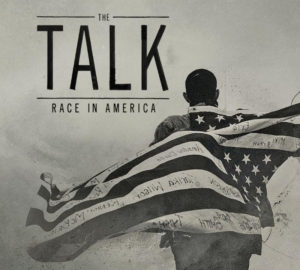Food, glorious, food. What better way to celebrate incredible edibles than on July 4, the holiday that offers the independence to choose among so much delish dishes? PBS Distrubtion comes into action with the DVD being released that day.
“What fish should I eat that’s good for me and good for the planet?” That’s the question bestselling author and lifelong fisherman Paul Greenberg sets out to answer. As part of his quest to investigate the health of the ocean—and his own—Greenberg spends a year eating seafood for breakfast, lunch and dinner. It’s a journey that’s brought to life in Frontline: The Fish on My Plate produced by Neil Docherty, David Fanning and Sarah Spinks. The documentary will be available on DVD July 4; the program will also be available for digital download.
The program chronicles Greenberg as he works on his upcoming book, The Omega Principle—and consumes more than 700 fish meals in hopes of improving his health through a dramatic increase in his Omega-3 levels.
With people worldwide consuming more seafood than ever, Greenberg also explores questions of sustainability and overfishing, traveling to Norway, where modern fish farming was invented; Peru to witness the world’s largest wild fishery; Alaska, where 200 million salmon can be caught each year; and Connecticut to visit a sustainable ocean farming pioneer who is trying to transform the fishing industry.
On the wild side, Greenberg finds that not everything is as it seems: At America’s largest seafood trade show, American wild salmon is labeled as a product of China. Why? Alaskan salmon is shipped frozen to China, thawed there to be deboned and filleted, and then refrozen to be shipped back to American supermarkets.
When it comes to farmed fish, things aren’t much more clear-cut: In Norway, the world center for farming America’s favorite fish, the Atlantic salmon, Greenberg finds a “salmon war.” The country’s fjords are festooned with farms, profits are huge, and growth expectations are high—but there is fierce criticism from environmentalists who complain the farms create more sewage than the entire human population of the country, that they spread disease, and that escaped farmed salmon are polluting the genetics of dwindling wild stocks.
Plus, a parasite, the sea louse—which feeds off the blood of the salmon—multiplies exponentially in the farms, and then infects entire fjords. This has led the government to halt the industry’s growth until the louse can be restrained.
In the program, Greenberg charts the industry’s efforts to accommodate its critics and search for solutions—visiting a “green” fish farm just south of the Arctic Circle, and discussing proposals for a genetically modified salmon that will be grown in tanks out of the ocean.
The Fish on My Plate isn’t just the story of one man’s journey. It’s a must-watch documentary for any consumer who cares about both his or her own health, and the health of the planet.
The three-part program Hungry for Food delves into the physics , chemistry and biology that creates each bite of food we take. Dr. Michael Mosley (below) and botanist James Wong celebrate the physics, chemistry, and biology hidden inside every bite.

Together Mosley and Wong travel the world and take over the UK’s leading food lab as they deconstruct favorite meals, taking viewers inside the food, right down to the molecular level.
The documentary will also be available on DVD July 4; the program will also be available for digital download.
Descriptions of each of the episodes included on the DVD are listed below:
We Are What We Eat
Michael and James explore how the chemicals in our food feed and build our bodies. The world is full of different cuisines and thousands of different meals. Yet when they’re reduced to their essence, there are actually just a handful of ingredients that our bodies absolutely need from our food to survive. These essential molecules come in a series of familiar sounding groups–carbohydrates, fat, protein, vitamins and minerals–but Michael and James discover plenty of surprises as they seek to understand exactly why each class of molecule is so important for the way our bodies work.
This is food taken to its fundamentals. By using the latest imaging techniques and incredibly detailed specialist photography, Michael and James offer a whole new way of thinking about the relationship we have with our modern diet.
A Matter of Taste
Michael and James explore how the marriage between chemistry and biology is the root of all the sensations, tastes, and flavors that we enjoy in our food. Michael begins by deconstructing a Thai meal. Its effect on the tongue can be reduced down to just five tastes: sweet, sour, salty, bitter and the less well-known umami. Umami is the most recently discovered of all the tastes. It’s a Japanese word that translates as ‘pleasant savory taste.’ By the end of their journey through flavor, they reveal that taste if far more than just being delicious–it’s a matter of survival.
Food on the Brain
Michael and James explore the effect of Food on the Brain. The brain is one of the greediest organs in the body in terms of the energy it needs to run. It influences our diet by generating the cravings we all experience. The food we put in our mouths has a very direct effect on all the grey matter lurking above. And the brain does something rather ingenious with all this sensory input. We all have a series of interconnections in our brains called the reward pathway. This allows us to make pleasant associations between the food we eat, who we eat it with, and where we eat it–and these feelings keep us coming back for more.

